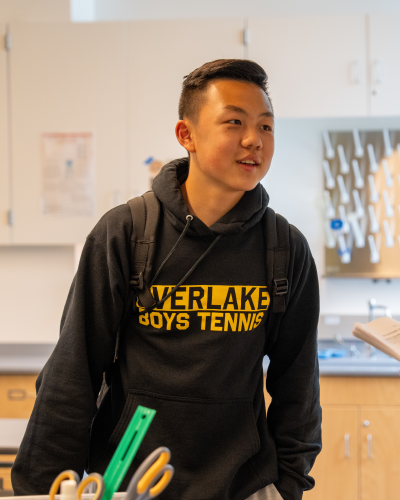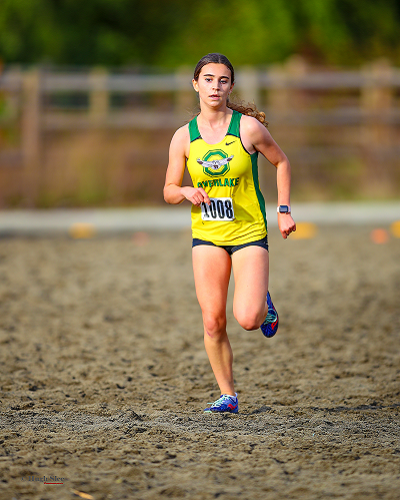What Do Eggs and Collaboration Say About the Brain

We’ve often heard the expression that two heads are better than one, but in a recent Overlake classroom it was more like several heads are better than one!
Teacher Jill Bowles knew that for her fifth-grade unit on the brain and nervous system that she could rely on a variety of experts to enhance her lesson. Bringing in faculty from physical education, technology, art, and an outside organization, the educators combined their knowledge in brain studies to create a lesson plan that was laid out well and engaging. “It was so nice to involve all these different departments,” says Bowles. “I’m so grateful for all the people in the school who helped me create this really cool lesson. I enjoyed it, and they tell me they did too.”
Middle School Athletic Director Mike Fine and Athletic Trainer Kim Chase did presentations on brain safety with helmet demonstrations and concussions. Students learned about symptoms, treatment, and long-term effects.
After the helmet demo, in groups of three, students created mini helmets for a series of egg drops. Art teacher Dana Len painted the eggs with faces, and students were told that their creations needed to allow for vision, hearing, and wear-ability. Starting with a hard-boiled egg, students quickly discovered that their helmets needed improvements. “With that first drop, you want the kids to fail, and then you want them to improve their design. The idea was to protect the egg, see where it cracked, and figure out what part of the brain would be affected and what functions.”
The third and final round was even more challenging. Now using a raw egg, students learned from each other what designs worked. That collaboration of good ideas resulted in better results. “Using a growth mindset, you can learn from other’s mistakes. Don’t get upset that someone else was successful, and you’re not. That way they were able to work on what they learned from other teams. Some things worked well that they kept in their design, but some realized that something like weight needed to be changed,” explains Bowles.
Bowles also worked closely with Mollie Page. She is Overlake’s Instructional Coach for Technology and helped in developing a padlet, which is a sort of digital folder. With it, Bowles was able to share photos, lesson plans, and test results with Bowles’ students. Page was also instrumental in bringing the latest brain research to the fifth-grade class. “One thing that’s fun about science is that you’re always learning new things,” says Bowles. “I learned a lot of new things in the research, and I’ve been teaching this material for a long time!"
Bringing experts into the classroom was another opportunity for students to learn about the brain. Researchers from the Amen Clinic came prepared with a presentation, but quickly shifted gears when they realized these fifth graders were ahead of the curve. “I was in awe of these kids,” says Diane Haehl, who is a therapist with Amen Institute. “Their questions were amazing, and I could tell they were really into the subject.”
At the end of the activity unit, students wrote a paper on the entire experience and how they were able to use a growth mindset. While all highlighted the egg drop test, Bowles says her goal goes beyond the classroom. “Having them understand how they learn and how they can continue to learn all throughout their life and what can prohibit that growth by bad habits or not wearing helmets was my goal.”
Click here for a photo gallery of the classroom instruction including the egg drop.



